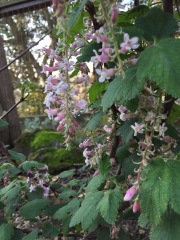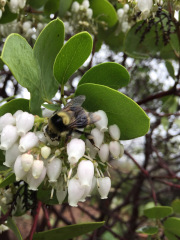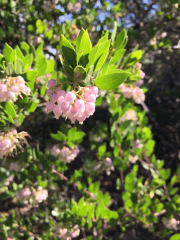Lot size: 2,150 front, 2,250 sq. ft. back garden, 90% native
Garden Age: Garden was installed in stages, beginning in 1990
Years on the Bringing Back the Natives Garden Tour: New this year!
Showcase Feature
In 1990 the front garden contained two rose bushes and hip-high weeds; the back yard was a sea of concrete. Merle loved to hike, and she wanted her garden to reflect what she saw in nature, and to create habitat for wildlife. Twenty five years later, the manzanitas, oaks, elderberry, buckeye, toyon, coast silk tassel, and redbuds she planted give the garden structure, and provide resting areas for birds. The scent of five types of sages (Cleveland, Sonoma, hummingbird, black, and Allen Chickering) drifts across the garden on warm breezes. This garden has something in bloom most of the year, starting with the delicate creamy pink flowers of the manzanita in winter, wildflowers and California lilac (among many others!) in the spring, and fuchsia, yarrow, buckwheats, and goldenrod in the summer and early fall.
Other Garden Attractions
• Established plants receive no summer water.
Gardening for Wildlife
Black and iridescent blue pipevine swallowtail butterflies flutter through the garden, laying eggs on the Dutchman’s pipevine—the only food source for the larval form of this beautiful butterfly. A bird bath (protected from cats by a large sill), feeders, nesting boxes, brushpiles, and snags, in addition to the seeds, berries, and the pollen and nectar sources in this garden have made it a haven for birds. Chickadees nest in the garden.
Garden Talks
2:00 “Native American uses of California native plants” by Dave Drummond


















